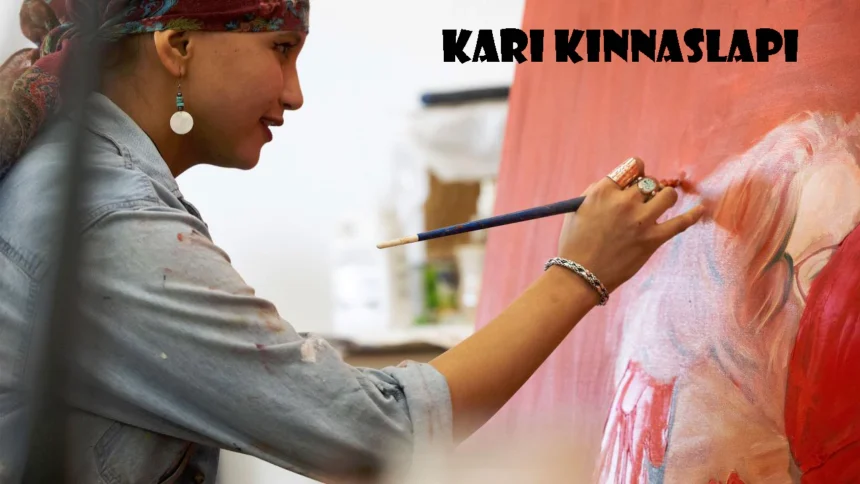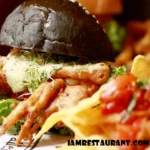Kari Kinnaslapi is a unique name with rich cultural resonance in Finland. While it may not be globally famous, within Finnish communities, the term carries layers of meaning across different domains such as cuisine, artistry, local history, and geography.
Unlike most modern names, it isn’t limited to a single person or object—it represents a blend of Finnish tradition and evolving cultural expressions.
In various regional dialects and folk usage, “Kinnaslapi” is sometimes associated with handmade crafts, woven mittens, or tools used in traditional Finnish kitchens. When paired with “Kari”—a common first name in Finland—it forms a compound that evokes authenticity, simplicity, and heritage.
Whether you hear the name in a recipe, an art show, or on a rural map, Kari Kinnaslapi offers a symbolic bridge to Finland’s roots.
This article explores the diverse meanings and uses of Kari Kinnaslapi, presenting it as more than just a label—it’s a window into the soul of Finnish rural life, tradition, and expression.
Kari Kinnaslapi as a Traditional Finnish Dish
One of the oldest associations of the name is with a hearty traditional dish, especially cherished in the northern and rural parts of Finland. This version of Kari Kinnaslapi refers to a rustic rye-based bread or pancake-like dish.
It’s typically prepared using rye flour, salt, and water—cooked slowly in iron pans or even over an open fire. The preparation reflects the country’s strong connection to grain farming and simple, nourishing meals.
Rye has always been a central part of Finnish cuisine due to its ability to grow in cold climates. This dish is often eaten as a staple food, served with salted butter, sour cream, or thick cheese. In some regions, smoked salmon or pickled herring is added to enhance its earthy flavor.
Families often pass down the recipe for Kari Kinnaslapi through generations, with each household putting its own spin on the method. Some prefer it thin and crispy, while others enjoy a softer, thicker version. It is traditionally served during winter celebrations, harvest festivals, and in homes where old-world recipes are still proudly followed.
Beyond taste, this dish represents resilience—a product of survival in cold climates, made with minimal ingredients, and filled with warmth and nourishment. Today, it has found new appreciation in cultural food festivals and online recipe communities seeking to revive Nordic roots.
Kari Kinnaslapi as an Artist and Cultural Voice
Apart from being a dish, Kari Kinnaslapi is also the name of a Finnish artist whose work reflects a strong connection between the natural world and national identity. Born in a region known for its forests and lakes, Kari’s artwork reflects themes of tradition, spirituality, and modern existentialism.
In galleries and cultural exhibitions, Kari is known for combining folklore with modern art techniques. His/her work often uses local materials—birch bark, wool, stone—alongside digital tools and contemporary media. One popular installation depicted the life of rural women in post-war Finland, mixing hand-drawn sketches with interactive audio recordings. Another explored ancient Sami mythologies, using sculpture and projection mapping.
Kari Kinnaslapi’s artwork doesn’t just aim to be visually appealing—it seeks to preserve the disappearing stories, symbols, and wisdom of Finland’s past. Audiences are invited to reflect on the clash between old-world values and modern society. For this reason, Kari is frequently featured in academic discussions about Nordic cultural preservation and postmodern interpretations of indigenous roots.
This blending of modern and ancient elements makes the name Kari Kinnaslapi resonate beyond borders. The artist has even collaborated with museums in Sweden, Estonia, and Germany, bringing Finnish folk expression to the global stage.
Kari Kinnaslapi as a Natural Destination and Travel Experience
There are also references to Kari Kinnaslapi as a tranquil travel destination, particularly in the regions of Finnish Lapland or North Karelia. Though not always marked on tourist maps, small towns or nature reserves bearing similar names are known for untouched landscapes, cozy wooden cabins, and traditions kept alive by local communities.
Visitors to such areas can expect to find thick pine forests, icy lakes, reindeer trails, and wooden structures dating back generations. Often, the name Kari Kinnaslapi is associated with traditional healing herbs, nature folklore, and spiritual retreats. In these places, time slows down. You might walk through fog-covered paths or sit by the fire listening to a local elder speak of ancestors and legends.
Such regions are now attracting more interest from eco-tourists and those seeking authentic, slow-travel experiences. Travelers interested in meaningful cultural immersion often visit for hands-on activities like crafting, berry-picking, ice fishing, and storytelling nights in candle-lit saunas.
Kari Kinnaslapi, as a place, may not be listed among Finland’s mainstream tourist attractions, but for those seeking emotional depth and cultural authenticity, it is a hidden gem.
Historical and Folkloric Background
The name Kinnaslapi comes from older Finnish and Karelian linguistic roots. “Kinnas” is a term connected to traditional mittens made with looped yarn—an old craft in Finnish winter culture.
“Lapi” may refer to a tool or shape, often used metaphorically in folklore to represent protection, shelter, or hard work. When put together, “Kinnaslapi” can symbolically mean “the mittened hand” or “hand of the worker.”
In many Finnish folk tales, names like Kari Kinnaslapi were used for heroic or wise characters—often lone wanderers, village elders, or kind-hearted healers. These figures symbolized strength through simplicity, wisdom through nature, and honesty in action. In this way, the name itself carries an emotional memory of those who lived closely with the land and valued silence, reflection, and endurance.
These folk stories continue to be taught in local schools, especially in northern villages, where oral tradition is kept alive through seasonal festivals and communal gatherings.
Global Recognition and Online Revival
As the global fascination with Nordic culture grows, so does curiosity about names like Kari Kinnaslapi. It now appears in online recipe collections, travel blogs, art documentaries, and cultural discussions. YouTube creators have started to share their experiences visiting such hidden places or trying to cook Finnish traditional meals.
Some artists and writers outside Finland have even adopted the style or theme of Kari Kinnaslapi’s work, giving it a new wave of international relevance. Even if the name remains unfamiliar to many, it now has an online footprint that will continue expanding through media and cultural exchange.
Educational institutions and museums are also exploring ways to preserve lesser-known Finnish names like this through digital archives and VR storytelling. The preservation of such identities matters more than ever in an age of cultural blending and loss of linguistic diversity.
Conclusion
In the end, Kari Kinnaslapi is more than a name—it’s a living expression of Finnish heritage. It symbolizes food passed down through hands that worked the land. It represents art that holds memory in its fibers. It reflects a land of snow and silence, wisdom and warmth.
Whether you encounter it in a quiet village, an art gallery, or a recipe book, Kari Kinnaslapi leaves behind a feeling of authenticity and respect for the past. It speaks of people who value simplicity, creativity, and emotional connection with nature.
In a rapidly changing world, names like Kari Kinnaslapi remind us to pause and listen to the soft stories carried in wind, wood, and warm bread.
Also Read:
Ximena Brittan Gunusen: Why Personalized Learning Matters More Than Ever
Burda at Ivy Tech Valparaiso: Real People Shaping the Future of Community Education
Use 1.5f8-p1uzt for Next-Gen Texture Compression: Save Space Without Losing Detail
Donkshakers Breakdown: What Makes a Donk Ride Truly Unique?
janell kochevar with element 3: Where Marketing Meets Mission-Driven Communication












